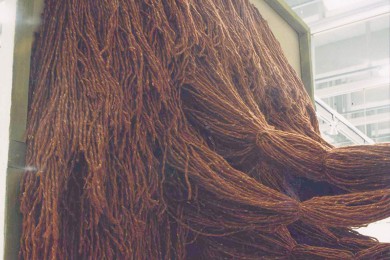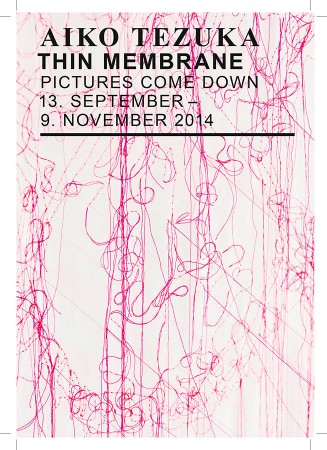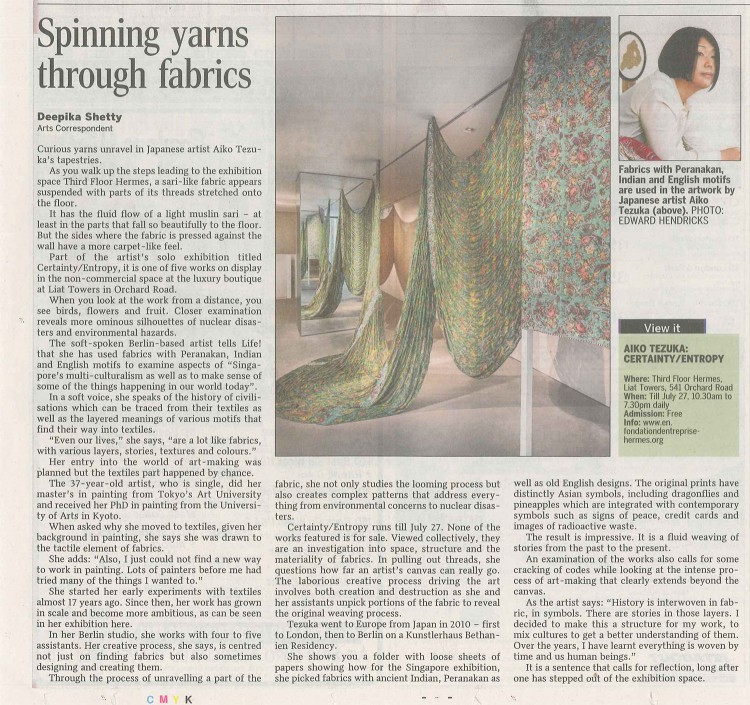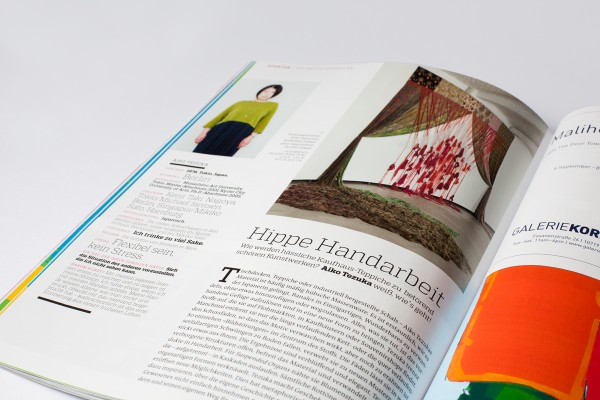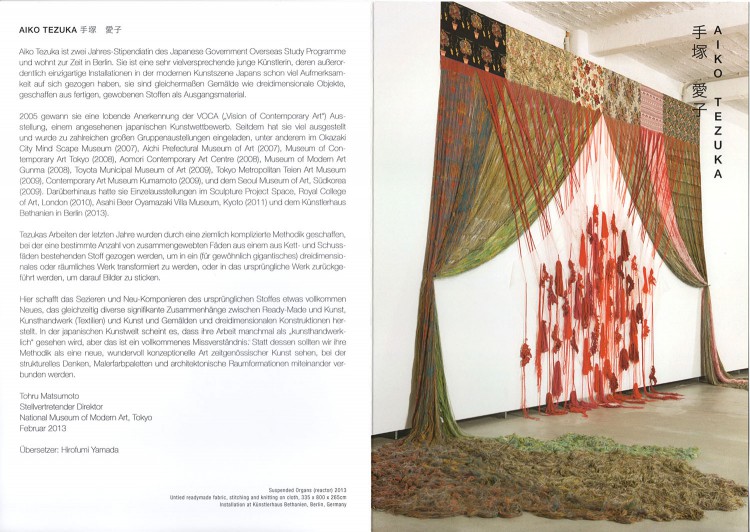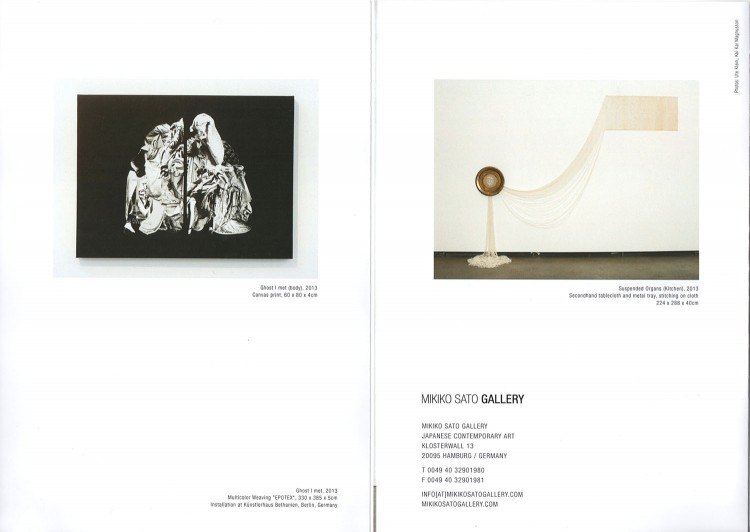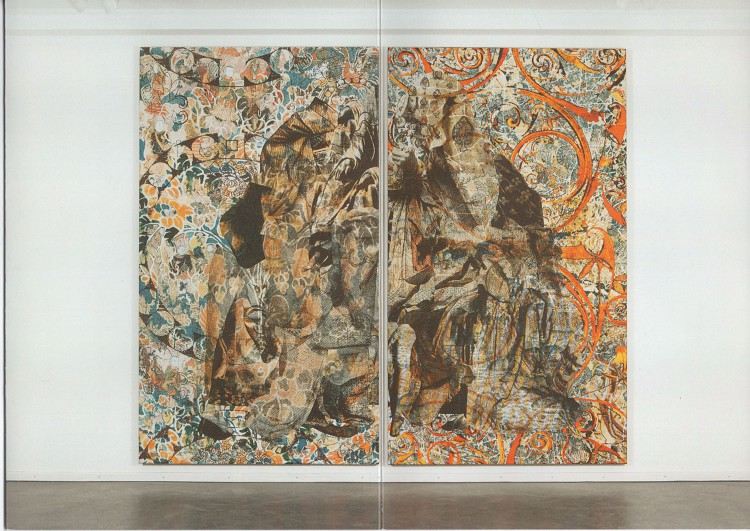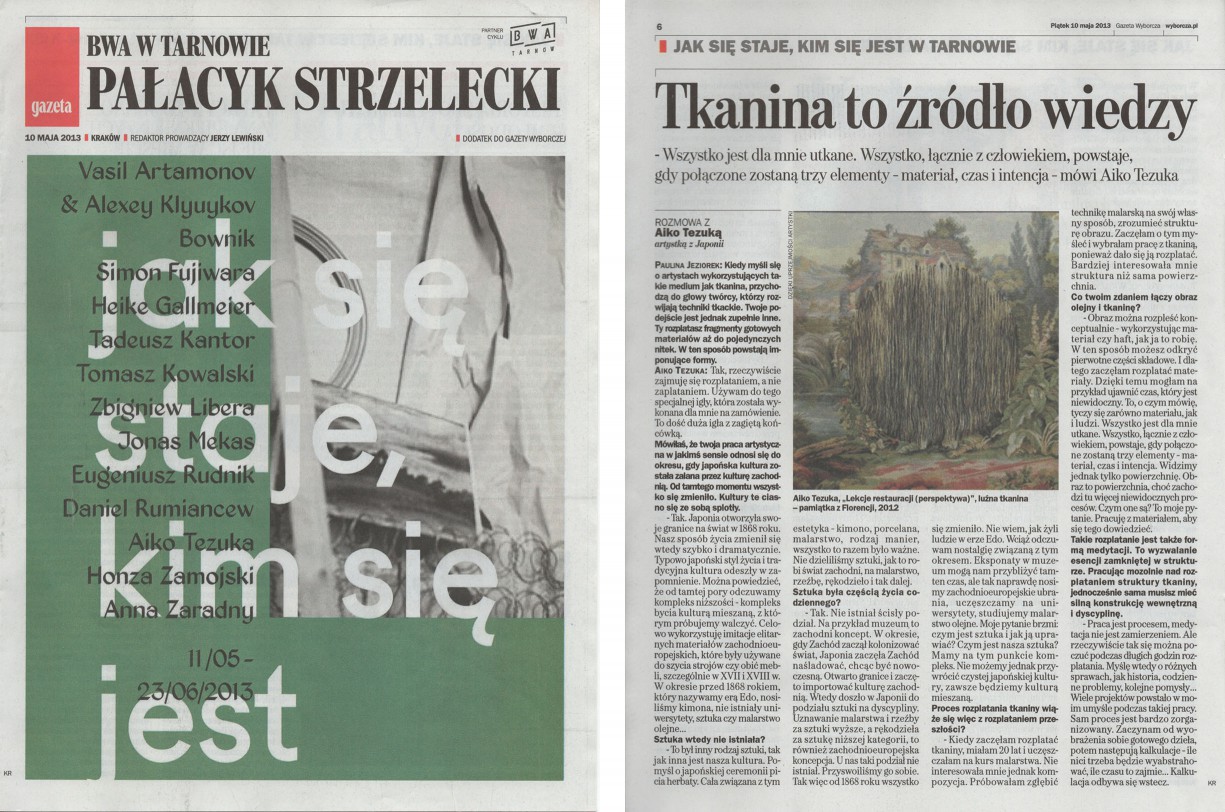
Author Archives: inamism


ripple effect – through the surface
New Acquisitions 2013~16 Samramansang from KIM Whanki to YANG Fudong
Entangled: Threads & Making
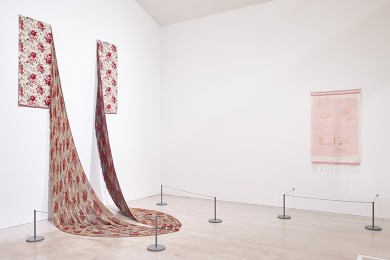
Entangled: Threads & Making
Nightfall (LE RETOUR DES TÉNÈBRES)
Bleibt man an einem Ort, oder nicht (2-persons show with Shingo Yoshida)
Schnittmengen
Artist File 2015 Next Doors
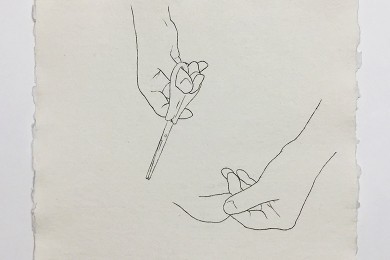
scissors <26032016>
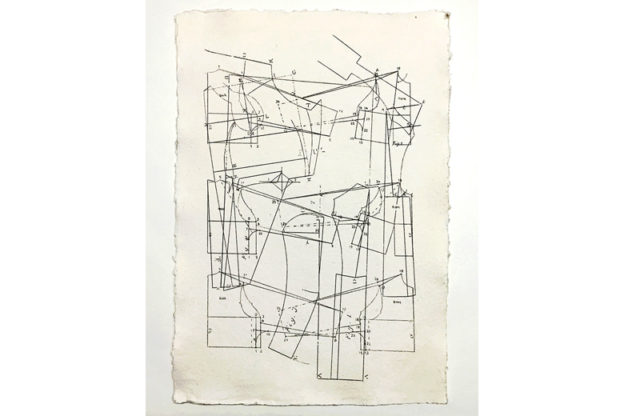
wayou-fuku <03042016>
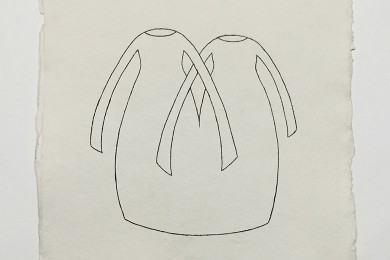
zwei Kleider 1 <07042016>
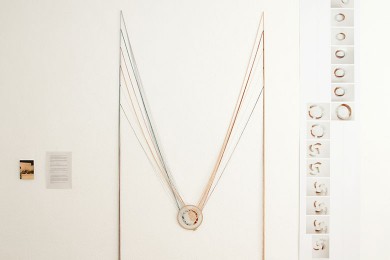
A bracelet in the tide (Viet Nam to Germany)
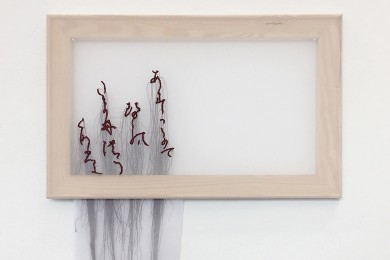
Bag (asukagaha) 1
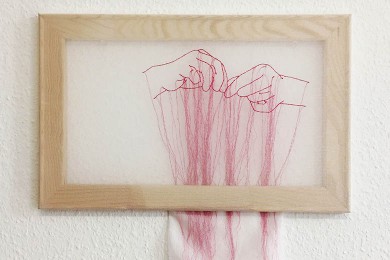
Bag (mending) 1
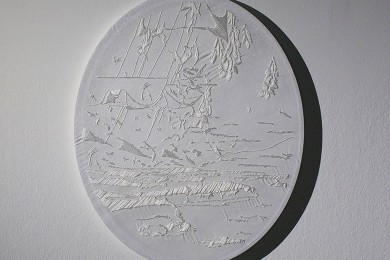
Bleibt man an einem Ort, oder nicht (walking in snow)
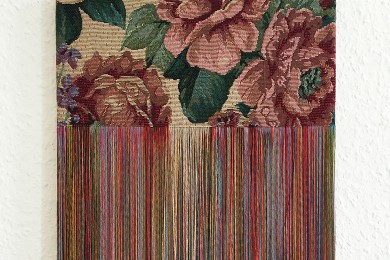
Fragile Surface – 2013-2016
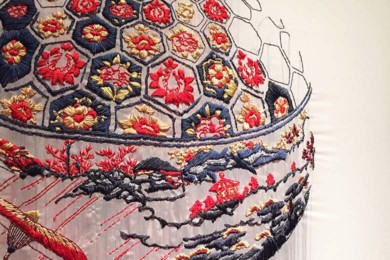
Großer Imari, 1700’s Edo
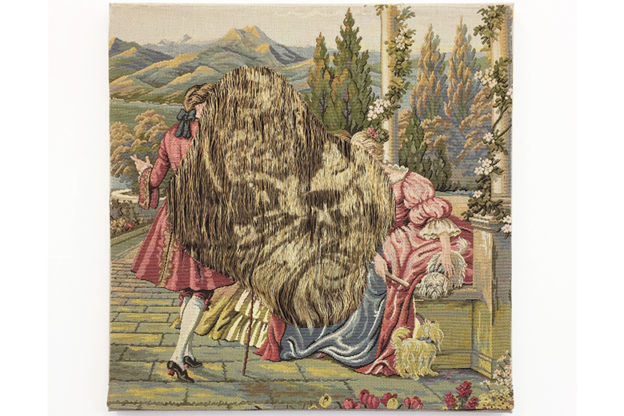
Lessons for Restoration (Geheimnis)

Loosening Fabric #5 (Nightfall)

Exhibition view (left to right): William Blake, after Johann Heinrich Füssli, Head of a Damned Soul, c. 1788-1790. The Fitzwilliam Museum, Cambridge; Aiko Tezuka, Loosening Fabric #5 (Nightfall), 2016. Courtesy: the artist; George Romney, Study for a Fiend’s Head (I), [s.d.]. The Fitzwilliam Museum, Cambridge; photograph: Sandra Pointet
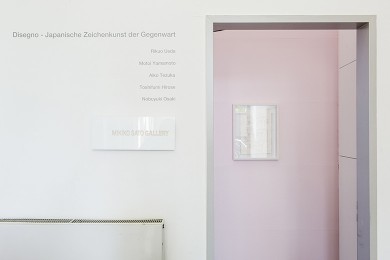
Disegno – Japanische Zeichenkunst der Gegenwart
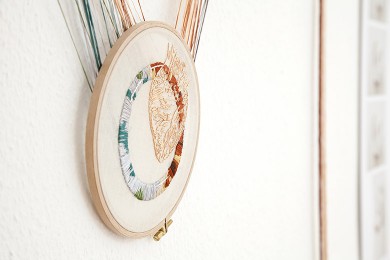
DIE GEZEITEN
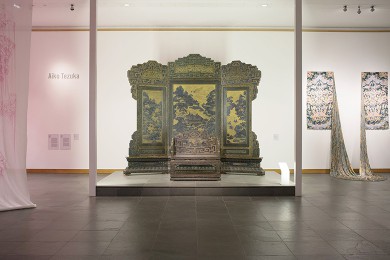
Schnittmengen. Zeitgenössische Kunst und die Überlieferung (Intersections: Contemporary Art and Tradition)
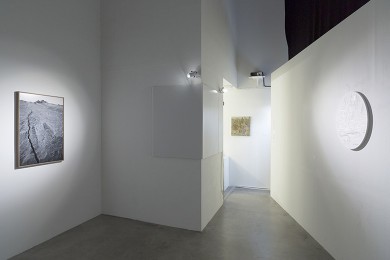
Bleibt man an einem Ort, oder nicht

Nightfall (LE RETOUR DES TÉNÈBRES L’imaginaire gothique depuis Frankenstein)
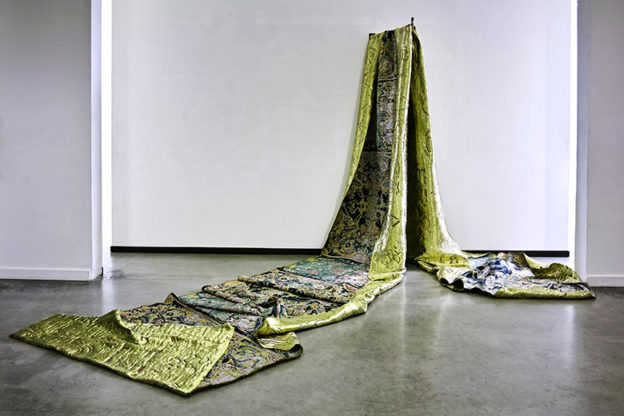
Certainty / Entropy (England 6)
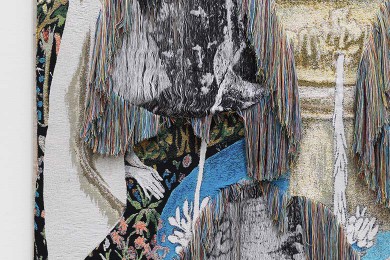
Dear Oblivion 1
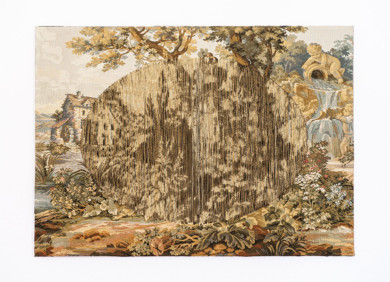
Lessons for Restoration (perspective) 4

Lessons for Restoration (perspective) 6
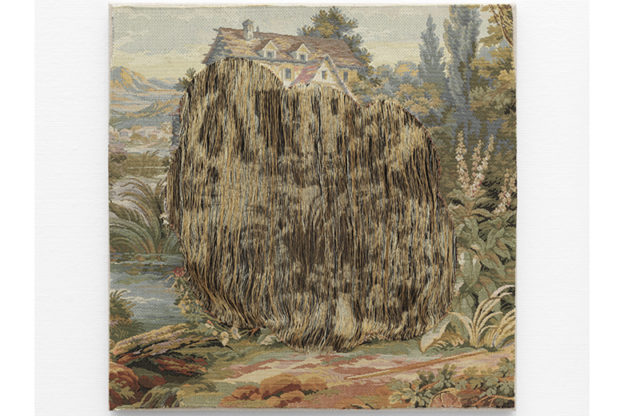
Lessons for Restoration (ruin)
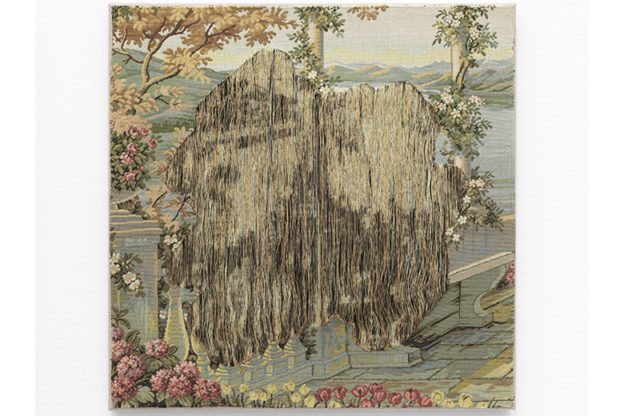
Lessons for Restoration (vanish)

Lessons for Restoration (vase) 2

Lessons for Restoration (party) 1
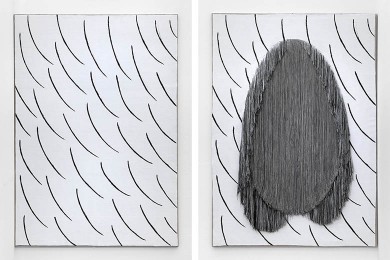
Lines 1

Stardust Letters

TOMROM

TOMROM

Unraveling, Restoring

Stardust Letters
This large installation was made in response to the request from the curators of the museum to make an artwork for blind people; either completely blind or those with weak eyesight, although museums are usually designed for those who can see. For this purpose, this work consisted of the four elements shown in the following.
1. A 3-meter-high installation with string curtains that indicated texts in braille on the net above, under which the visitors could walk through and feel the texture of the strings.
2. A text in braille on the wall, which the visitors could read and touch. The text was written as a letter from the artist.
3. Two sculptures from the permanent collection of the museum, which the visitors were allowed to touch.
4. The braille plan on the net.
I sought ways of keeping equality between blind people and those who can see in the museum, which can be referred to as “the sanctuary of sight”. Here, the visitors who are not blind could see the large installation but not read what the letter said. On the other hand, blind visitors could not see the installation but “read” the letter. Both of them were invited to enter the forest of threads, walk through and feel its texture. The content of the letter was kept strictly secret from the people who can see during the exhibition in order to maintain the equality between the two types of visitors.
A Braille Letter (2015, Exhibition “Stardust Letters”, Hyogo Prefectural Museum of Art
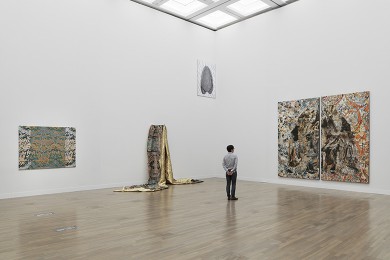
Artist File 2015 Next Doors: Contemporary Art in Japan and Korea
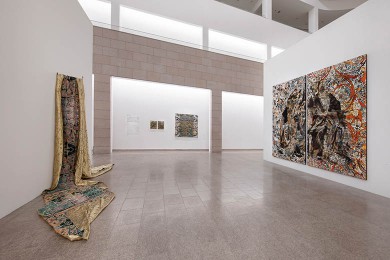
Artist File 2015 Next Doors
American express Departures
Lessons for Restoration @ MAGO
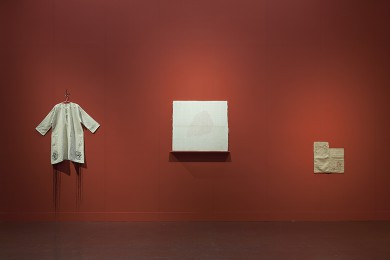
In Search of Critical Imagination

Certainty / Entropy (England 1)
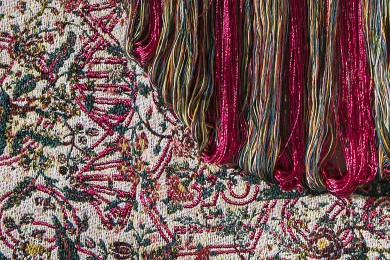
Certainty / Entropy (India 1)
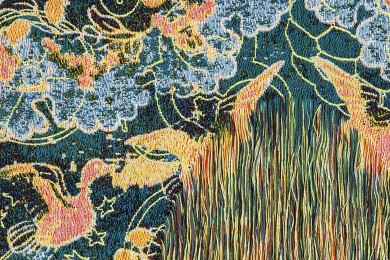
Certainty / Entropy (Japan 1)
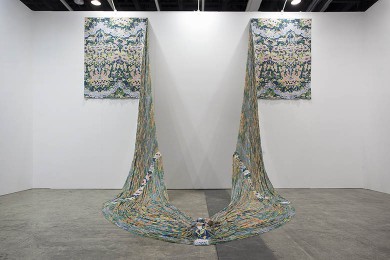
Certainty / Entropy (Japan 2)
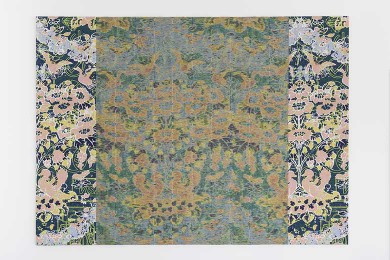
Certainty / Entropy (Japan 5)

Certainty / Entropy (Peranakan 1)
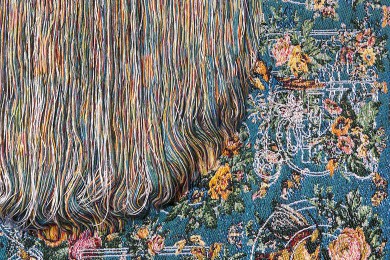
Certainty / Entropy (Peranakan 2)

Digital / Analog
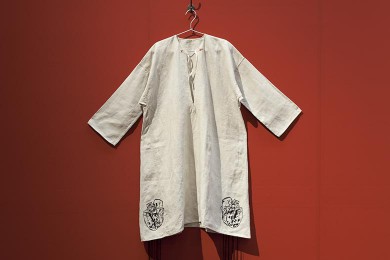
Dress (Two hearts)

Essen – Blind
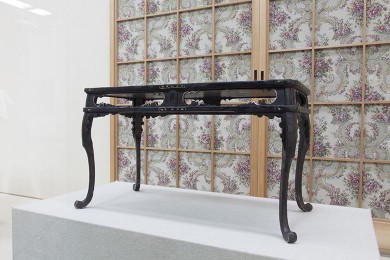
Re-imagine
Materials used in the installation
Earthenware bowl with Buddhist figure in line engraving
8th century, bronze, D.24.4, H.11.7
Stainless steel bowl, designed by Yanagi Sori,
before 2013, stainless steel, D.15.6, H.11.7
purchased at Day&Day’s store in AEON Mall Kashiihama, Fukuoka
–
Cock, Attributed to Tawaraya Sotatsu(?−?)
17th century, ink on paper, 96.2 × 44.5
–
Incense box, decorated in maki-e lacquer and mother-of-pearl inlay with design of chrysanthemums
13th century, lacquered wood, H. 3.0, 6.2 × 6.2
Spice box with design of peonies, Hasami ware
before 2013, porcelain, H.4.5, D.5.8
purchased at AEON Mall Kashiihama, Fukuoka
–
Table decorated in mother-of-pearl inlay with lotus petal design
10th-12th century, lacquered wood, H. 33.4, 27.0 × 57.9
–
Gobelin fabric-fitted shoji
2014, fabric, wood, 192 × 87 (each)
–
STAVE Mirror
before 2013, fiberboard, foil, glass, 160 × 40 × 5
purchased at IKEA Fukuoka Shingu
–
Set of mukozuke bowls in the shape of sansho (Japanese pepper corns), Agano ware
17th century, pottery, H.7.6, D.11.0 (each)
Set of small dishes in the shape of balloon flower
before 2013, porcelain, H.1.9, D.6.5 (each)
purchased at Daiso in the Shoppers Fukuoka
–
Large plate with landscape design in underglazed blue in Nabeshima style, Arita ware
17-18th century, porcelain, D.29.5, H.7.7
Plate with design in Koimari style
before 2013, porcelain, D.24.5, H.7.7
purchased at Daiso in the Shoppers Fukuoka

Suspended Organs (Bruise)
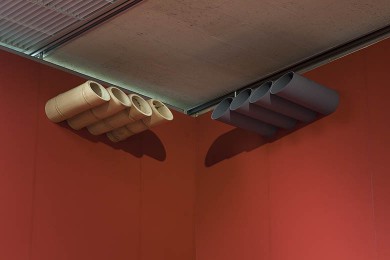
Two kinds of object that liquid runs through
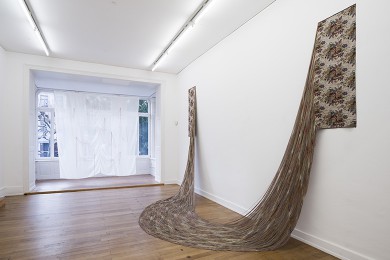
Installation View / Installationsansicht

h a u s s t e l l e n
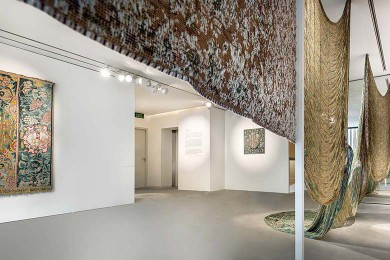
Certainty / Entropy
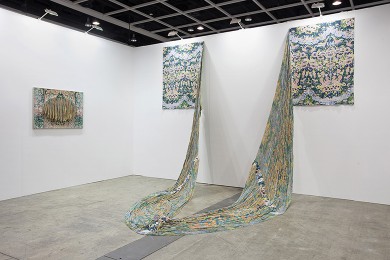
Art Basel Hong Kong

Thin Membrane, Pictures Come Down
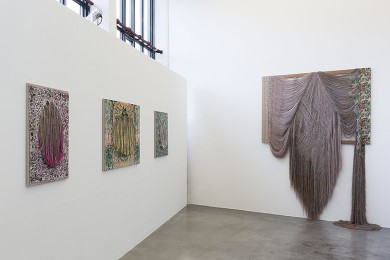
Certainty / Entropy
Aiko Tezuka Straits Times
art magazine
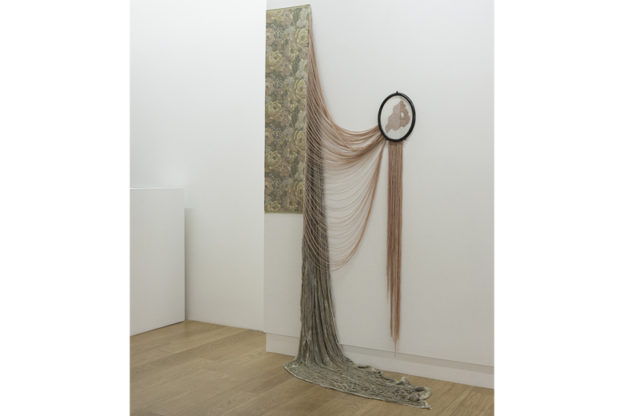
Bruise
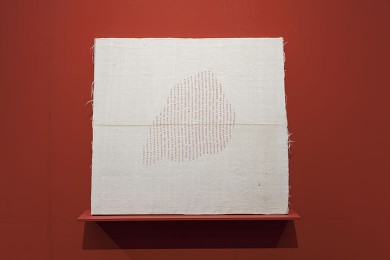
Bruise (Stain)
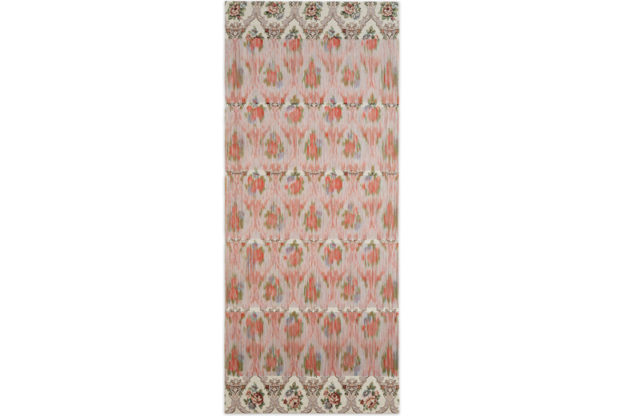
Fragile Surface 2013 – pink
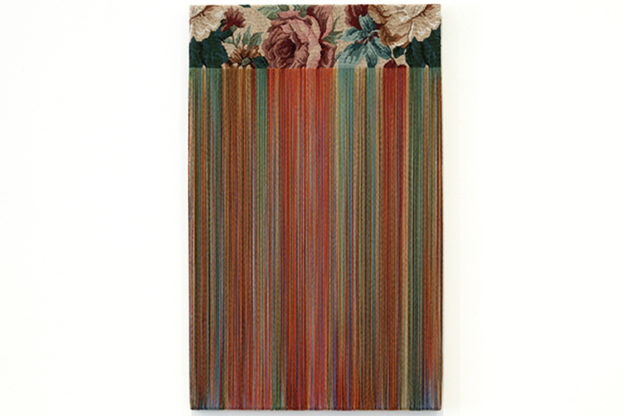
Fragile Surface 2013-15

Ghost I met
Images featured on the left panel: Japan
Background
Stand cover, silk with patterns of flowering trees, loins and human figures (Shōsō-in temple, Japan, 8C)
Embroidery on silk, Tenjukoku (Heavenly Paradise) scene (Chugu-ji temple, Japan, 7C)
Stand cover, silk with kyokechi-dyed designs of flowering trees and paired-birds (Shōsō-in temple, Japan, 8C)
Nishiki (brocade) with archers chasing lions (Hōryū-ji temple, Japan, 7C)
Ghost
Suigetsu-Kannon (Buddha statue) (Tōkei-ji temple, Japan, 13C)
Kimono of Maiko, which refers to a dancing girl, an apprentice geisha (Japan, 20C)
Kimono (Japan, Taishō era; 1912-1926)
Kyōgen (traditional Japanese comic theater) costume (Japan, 20C)
Noh (classical Japanese musical drama) costume (Japan, 20C)
Oiran (courtesan) costume (Japan, Edo era; 1600-1867)
Farmer’s trousers (Japan, 19C)
Silk shoes with nishiki (brocade), and silk with embroidered flowers (Shōsō-in temple, Japan, 8C)
Images featured on the right panel: West
Background
Tunic, Coptic textile (Egypt, 7C)
Tunic with flower ornaments, Coptic textile (Egypt, 9-10C)
Adam and Eve in the Garden of Eden with Virtues, Gobelin (England, 17C)
David and Bathsheba, Gobelin (England, 17C)
The Finding of Moses, embroidery (England, 17C)
Border bobbin lace (Italy, 17C)
Book of Durrow, carpet page, Celtic pattern (Ireland, 7C)
Ghost
Louis XIV, Hyacinthe Rigaud (France, 1701)
Hermes and the Infant Dionysus, Praxiteles (ancient Greece, Unknown)
The moneychanger and his wife, Marinus van Reymerswaele (Spain, 1539)
Ecstasy of Saint Teresa, Gian Lorenzo Bernini (Italy, 17C)
Dress, muslin with silk embroidery (probably India for the Western market, 1800)
Dress, silk with warp-and weft-float patterning (France, 1775)
Tennis dress, cotton (England, 1885)
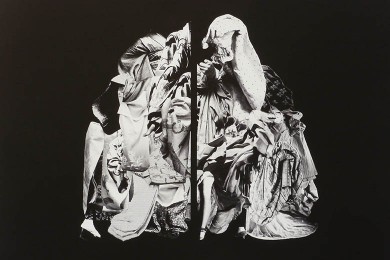
Ghost I met (Body)
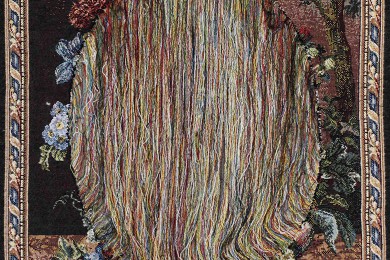
Lessons for Restoration (garden)
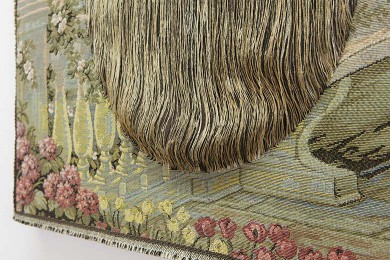
Lessons for Restoration (mirror)
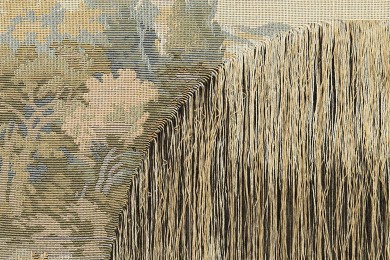
Lessons for Restoration (perspective) #2
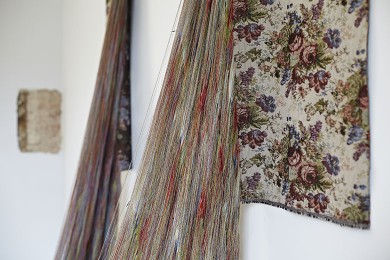
Loosening Fabric #2

Operation 1 (knitting)
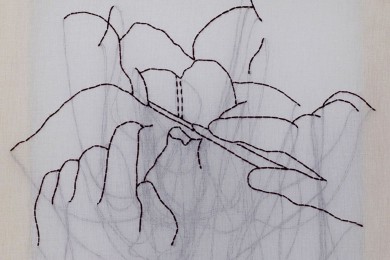
Operation 2 (op)
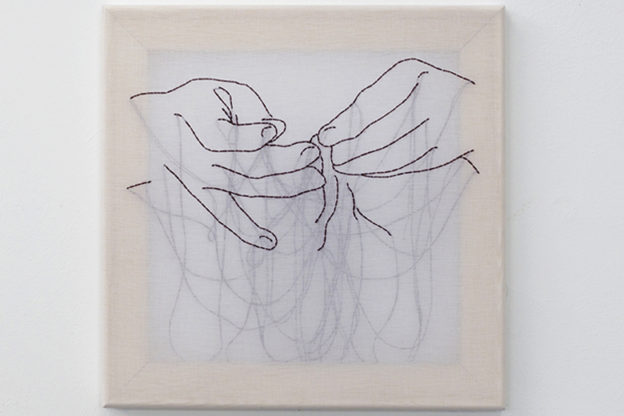
Operation 3 (sewing)
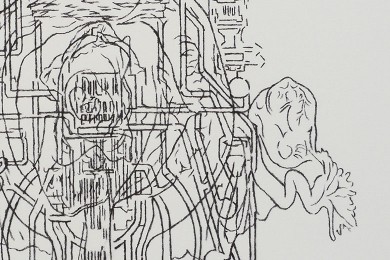
Suspended Organs (Embryo)

Suspended Organs (Kitchen)

Suspended Organs (Reactor)

Two Identical Scarves from H&M, extracted Threads #4

Vapor

Ghost – Suspended Organs
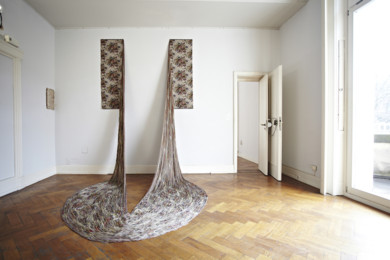
Home Stories

BLUMEN

The Empire of Folds: Fashion and Textile Art from Japan
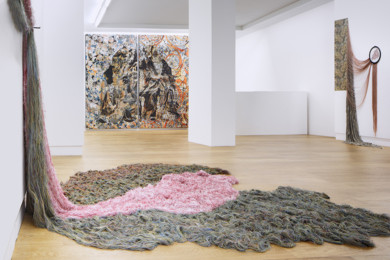
Rewoven
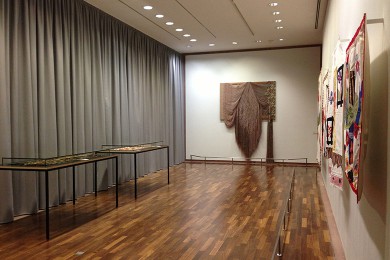
To Open Eyes, Art and Textiles from the Bauhaus to Today
MIKIKO SATO LEAFLET
BWA LEAFLET
be magazine #20

Lessons for Restoration (perspective)

Lessons for Restorations (sewing up)
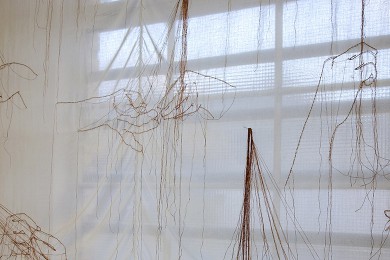
Letters from the Field

New Contemporaries
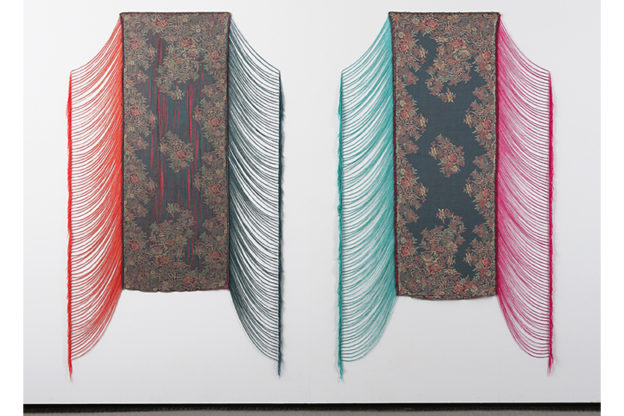
Two Identical Scarves from H&M, extracted Threads #1

Fountain – On Generating- On Generating
The images featured;
Mourner No.21, Sculpture, Claus Sluter (France,15C)
Las Meninas, Baroque painting, Diego Velázquez (Spain,17C)
Leather clothes (Ancient Egypt, Unknown)
Cat’s cradle (the game)
Stand cover, silk with kyokechi-dyed designs of flowering trees and paired-birds (Shōsō-in temple, Japan, 8C)
Oshira-sama, Indigenous (local religion) god, (Japan, Unknown)
Calico pattern (India,18C)
Hermes and the infant Dionysus, Greek sculpture, Praxiteles (ancient Greek, Unknown)
Wild boar, ancient cray figure (Japan, 5C)
God wooden image (Japan, 12C)
Embroidery on silk, Tenjukoku (Heavenly Paradise) scene (Chugu-ji temple, Japan, 7C)
Illustrations of knitting (United States, 20C)
Landscape painting (China, 17C)
Rococo Tapestry designed by François Boucher (France, 18C)
Traditional knot (Japan, 20C)
Ceramic pattern (Korea, 16C)
Tamamushi Shrine, miniture shrine (Hōryū-ji temple, Japan, 7C)
Ex-Voto de 1662, Baroque painting, Philippe de Champaigne (France, 1662)
Louis XIV, Baroque painting, Hyacinthe Rigaud, (France, 18C)
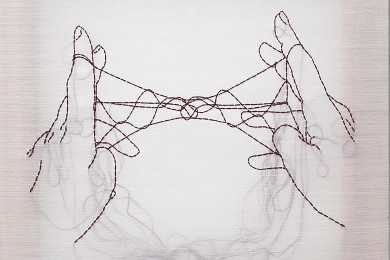
Fragile Surface (Cat’s Cradle 1)

Fragile Surface (underground)
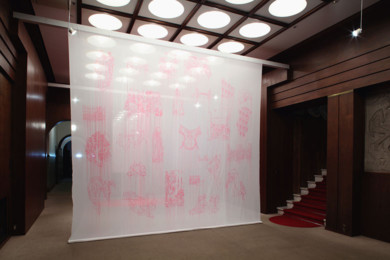
Thin Membrane, Pictures Come Down
The images featured;
Mourner No.21, Sculpture, Claus Sluter (France,15C)
Las Meninas, Baroque painting, Diego Velázquez (Spain,17C)
Leather clothes (Ancient Egypt, Unknown)
Cat’s cradle (the game)
Stand cover, silk with kyokechi-dyed designs of flowering trees and paired-birds (Shōsō-in temple, Japan, 8C)
Oshira-sama, Indigenous (local religion) god, (Japan, Unknown)
Calico pattern (India,18C)
Hermes and the infant Dionysus, Greek sculpture, Praxiteles (ancient Greek, Unknown)
Wild boar, ancient cray figure (Japan, 5C)
God wooden image (Japan, 12C)
Embroidery on silk, Tenjukoku (Heavenly Paradise) scene (Chugu-ji temple, Japan, 7C)
Illustrations of knitting (United States, 20C)
Landscape painting (China, 17C)
Rococo Tapestry designed by François Boucher (France, 18C)
Traditional knot (Japan, 20C)
Ceramic pattern (Korea, 16C)
Tamamushi Shrine, miniture shrine (Hōryū-ji temple, Japan, 7C)
Ex-Voto de 1662, Baroque painting, Philippe de Champaigne (France, 1662)
Louis XIV, Baroque painting, Hyacinthe Rigaud, (France, 18C)
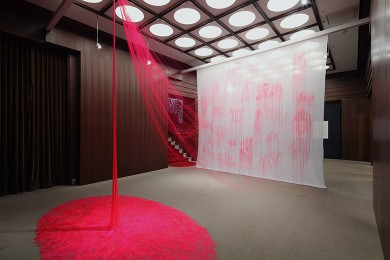
Stitch by Stitch
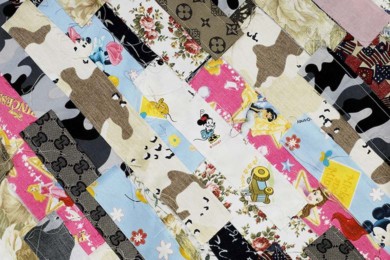
A Patchy Bag
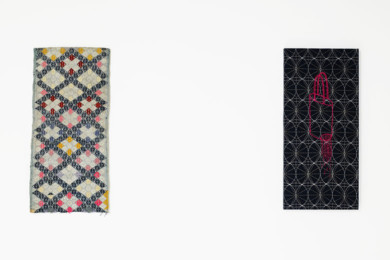
Bag (KOGIN)
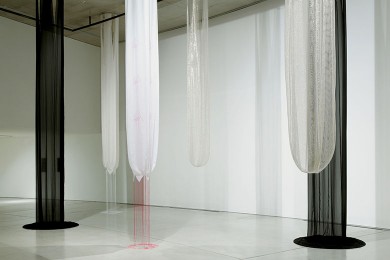
Bags
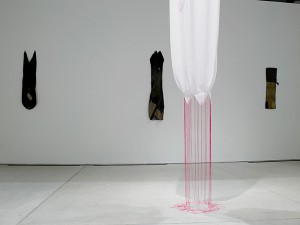
This piece titled “Bags” is installed with the old bags that were used 100 years ago in the area of Aomori, the northern region of Japan. The old bags were mended repeatedly showing that it was used for many years as fabrics were precious at that time.
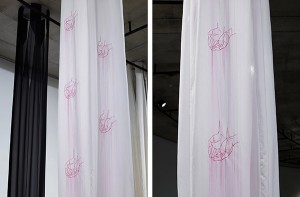
The images of hands moving through liquid are embroidered on this piece. Related to that, the threads running down behind the cloth seem as if they are about to be scooped up again and again by another hand.
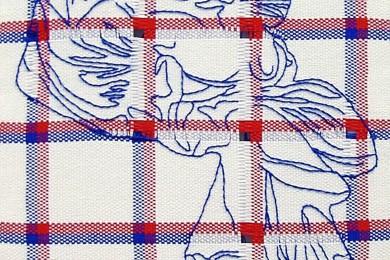
grid – clothes of Dionysos
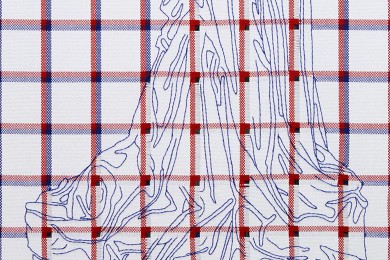
grid – eyck
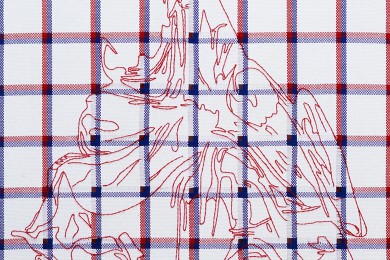
grid – suigetsu

Loom of layers
Images featured:
Stand cover, silk with kyokechi-dyed designs of flowering trees and paired-birds, Shōsō-in temple (Japan, 8C)
Calico pattern (India,18C)
Ecstasy of Saint Teresa, Baroque sculpture, Gian Lorenzo Bernini (Italy, 17C)
Hermes and the Infant Dionysus, Praxiteles (ancient Greece, Unknown)
Miroku Bosatsu, Buddha statue, Chūgū-ji temple (Japan, 7-8C)
Suigetsu-Kannon, Buddha statue, Tōkei-ji temple (Japan, 13C)
“Uchikake” outer garment featuring hexagonal and diamond patterns created in embroidery and pressed gold leaf, (Kōdai-ji temple, Japan, 16C)
Wallpaper pattern (France, 19C)
Collar part of local clothes (Guatemala, Unknown)
Tunic with flower ornaments, Coptic textile (Egypt, 9-10C)
Tunic, Coptic textile (Egypt, 8C)
Ex-Voto de 1662, Baroque painting, Philippe de Champaigne (France, 17C)
Madonna of the Rosary, Baroque painting, Michelangelo Merisi da Caravaggio (Italy, 17C)

Picture of Layers – Sewing Together
The Images featured;
Left
(Background)
Tunic, Coptic textile (Egypt, 7C)
Nishiki (brocade) with archers chasing lions (Horyu-ji Temple, Japan, 7C)
Stand cover, silk with kyokechi-dyed designs of flowering trees and paired-birds (Shōsō-in temple, Japan, 8C)
(Ghost)
Louis XIV, Hyacinthe Rigaud (France, 1701)
Ghent Altarpiece (or the Adoration of the Mystic Lamb), Hubert and Jan van Eyck (Belgium, 15C)
Right
(Background)
Tunic, Coptic textile (Egypt, 7C)
Border bobbin lace (Italy, 17C)
Book of Durrow, carpet page (Ireland, 7C)
Wallpaper pattern (France, 19C)
(Ghost)
Suigetsu-Kannon (Buddha statue) (Tōkei-ji temple, Japan, 13C)
Miroku Bosatsu, Buddha statue (Chūgū-ji temple, Japan, 7-8C)

rect08-1
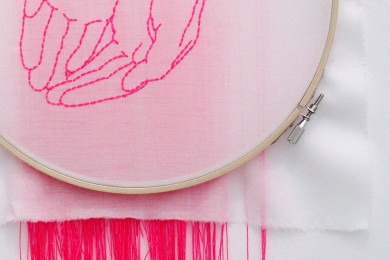
skim 1
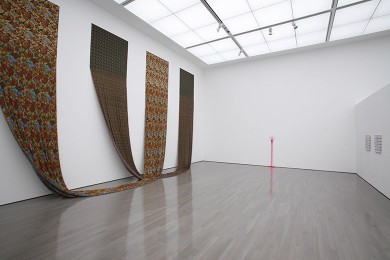
Secrets and Trick

Tangent
A Bag With / Without Function
(Artist statement for the work Bags that was made for the exhibition Tangent, with Artist in residence, Aomori Contemporary Art Centre, Aomori, Japan, 2008.)
A bag can be seen as a metaphor for an extension of our body because it holds things in it as if a body carries various organs. The function of a bag is to keep a number of things together and label them. In this way, they can be carried around easily, making them less difficult to manage.
While they are supposed to be useful items to organise things, if the bag bottom breaks and their contents spill out, it causes a disruption and thereby betrays our expectation. Such incidents mercilessly disturb the order of things no matter how neatly they are organised.
During the residency program at Aomori Contemporary Art Centre, Aomori (ACAC), I had an opportunity to see old fabric bags, “Futon” and “Koginzashi” (a local embroidery) that were used in this region before industrialisation. They were used not for commercial purposes but to use for themselves.
At that time, clothes and fabrics were precious items as daily essentials were scarce, starkly contrasting today’s world where we can frequently buy brand new products. Seeing the bags with a number of patches, it made me wonder what was carried in those bags.
The traces of repairs also reminded me of the afore-mentioned image of torn bags with their contents spilling out one after another.
If there is an imaginary bag in an ideal world, it has to be the one that can carry many possibilities that cannot be realised at a time. Even formless and nameless things, as they are placed inside a bag, can become visible as the bag gives them a form and a discernible identity.
And yet, at the same time, such a bag is perhaps only imaginary and thus unattainable. In actuality, it remains merely a broken bag with its contents overflowing. In other words, the bag that entails the absolute imposition of the categorising and labelling is of mere impossibility. It is a transient entity and it disappears immediately after it appears. The ideal bag is indeed merely an ideal and thus not functional or practical, just like a utopian ideology.
Aiko Tezuka
Aomori, Japan, June 2008

MOT annual 2008 Unraveling and Revealing
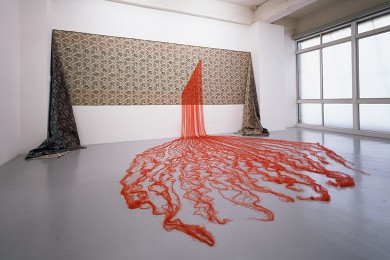
Extracting Warp Thread (wound and net)
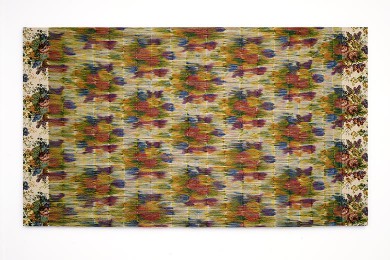
Layer of Threads
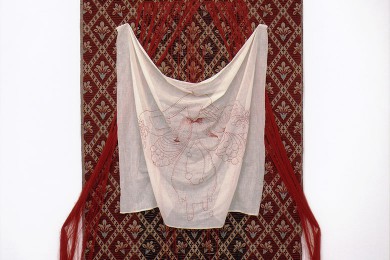
Picture and Layer (Organ)
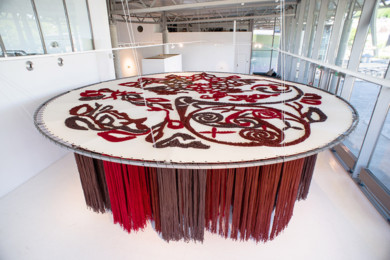
Thin Film, Underground Forest
The images featured;
Stand cover, Silk; Nishiki with roundels of flowering plants on a read ground, fabric, fragment (Shōsō-in temple, Japan, late 8C)
Calico pattern (India,18C)
Book of Durrow, carpet page, Celtic pattern (Ireland, 7C)
“Mitsudomoe-mon”, a family crest with three comma-shaped figures in a circle (Japan, Unknown)
Mosque tile pattern (Iran,14-15C)
Fabric pattern (Spain,18C)

Thin Film, Underground Forest
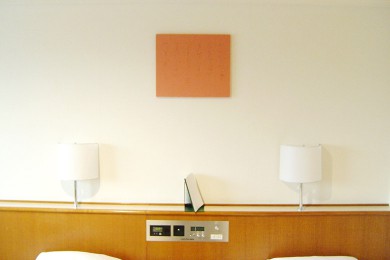
Art in Transit
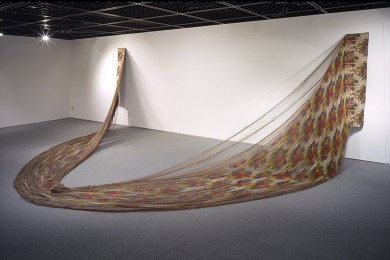
Aiko Tezuka
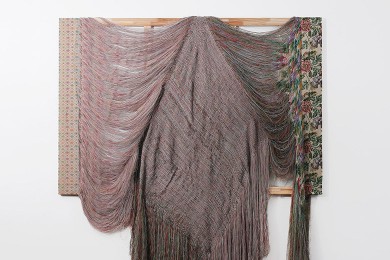

Rewoven



Loosening Fabric
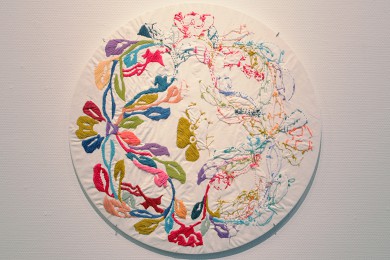

An Embroidery without any reverse side



Aiko Tezuka, Outside of Modernism
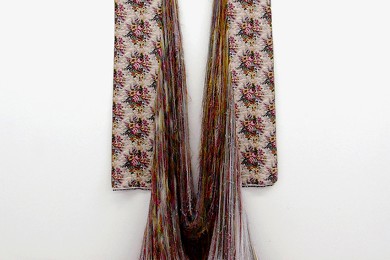

Unweavable Object
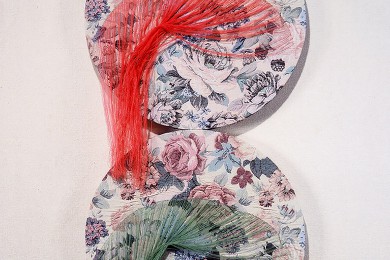

Two Types of Thread Extracted from the Same Fabric


Extracting Warp Threads – Five colours



Extracted Thread from Two Types of Fabric
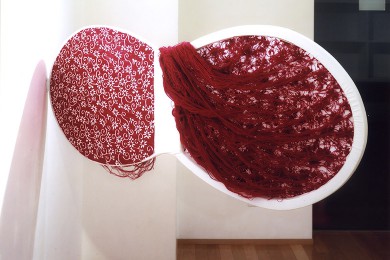

Slight Vibration
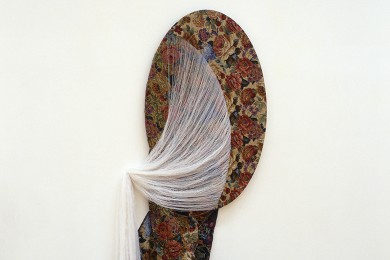

Extracting Warp Threads to Create a New Quantity
